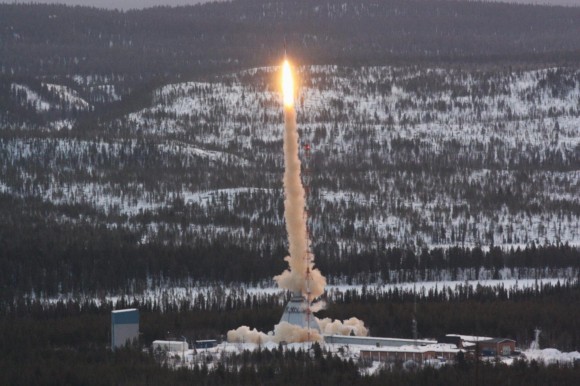| Online: | |
| Visits: | |
| Stories: |

| Story Views | |
| Now: | |
| Last Hour: | |
| Last 24 Hours: | |
| Total: | |
DNA Won’t Be Killed Dead By A Rocket Ride To Space, Study Suggests

Launch of the TEXUS-51 sounding rocket. A similar launch, TEXUS-49 in March 2011, included plasmid DNA on the exterior of the rocket. A November 2014 study based on the flight suggests DNA could survive a suborbital spaceflight. Credit: Adrian Mettauer
So how ’bout those planetary protection agreements? Turns out that plasmid DNA — the kind that exists in bacterial cells — may be able to survive a rocket trip to space, based on research with an engineered version. And if life’s building blocks can get there, perhaps they can even go beyond. The International Space Station? Mars?
This information comes from a single peer-reviewed study based on a sounding rocket that went into suborbital space in March 2011. Called TEXUS-49, its payload included artificial plasmid DNA that had both a fluorescent marker and an antibiotic resistance gene.
(…)
Read the rest of DNA Won’t Be Killed Dead By A Rocket Ride To Space, Study Suggests (309 words)
© Elizabeth Howell for Universe Today, 2014. |
Permalink |
No comment |
Post tags: DNA, sounding rocket
Feed enhanced by Better Feed from Ozh
Source: http://www.universetoday.com/116893/dna-wont-be-killed-dead-by-a-rocketship-ride-to-space-study-suggests/



